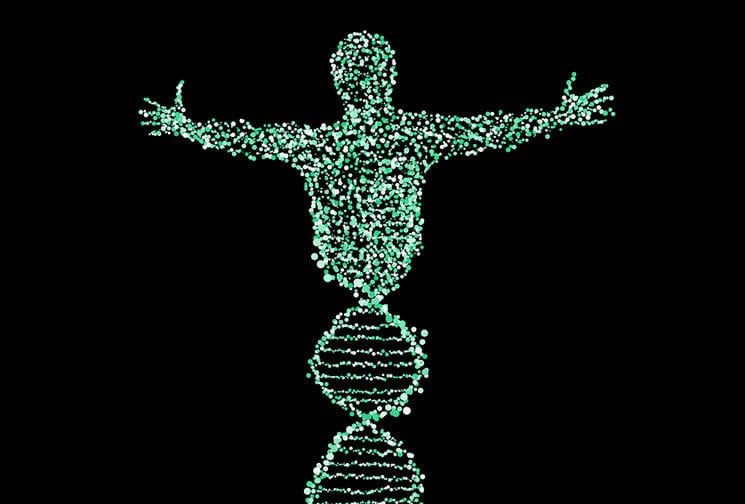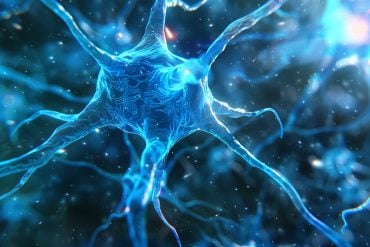Summary: Math models and computer simulations have helped researchers answer a perplexing question about a biological event that occurred 7,000 years ago.
Source: Stanford University.
Starting about 7,000 years ago, something weird seems to have happened to men: Over the next two millennia, recent studies suggest, their genetic diversity -specifically, the diversity of their Y chromosomes – collapsed. So extreme was that collapse that it was as if there was only one man left to mate for every 17 women
Anthropologists and biologists were perplexed, but Stanford researchers now believe they’ve found a simple – if revealing – explanation. The collapse, they argue, was the result of generations of war between patrilineal clans, whose membership is determined by male ancestors.
The outlines of that idea came to Tian Chen Zeng, a Stanford undergraduate in sociology, after spending hours reading blog posts that speculated – unconvincingly, Zeng thought – on the origins of the “Neolithic Y-chromosome bottleneck,” as the event is known. He soon shared his ideas with his high school classmate Alan Aw, also a Stanford undergraduate in mathematical and computational science.
“He was really waxing lyrical about it,” Aw said, so the pair took their idea to Marcus Feldman, a professor of biology in Stanford’s School of Humanities and Sciences. Zeng, Aw and Feldman published their results May 25 in Nature Communications.
A cultural culprit
It’s not unprecedented for human genetic diversity to take a nosedive once in a while, but the Y-chromosome bottleneck, which was inferred from genetic patterns in modern humans, was an odd one. First, it was observed only in men – more precisely, it was detected only through genes on the Y chromosome, which fathers pass to their sons. Second, the bottleneck is much more recent than other biologically similar events, hinting that its origins might have something to do with changing social structures.
Certainly, the researchers point out, social structures were changing. After the onset of farming and herding around 12,000 years ago, societies grew increasingly organized around extended kinship groups, many of them patrilineal clans – a cultural fact with potentially significant biological consequences. The key is how clan members are related to each other. While women may have married into a clan, men in such clans are all related through male ancestors and therefore tend to have the same Y chromosomes. From the point of view of those chromosomes at least, it’s almost as if everyone in a clan has the same father.
That only applies within one clan, however, and there could still be considerable variation between clans. To explain why even between-clan variation might have declined during the bottleneck, the researchers hypothesized that wars, if they repeatedly wiped out entire clans over time, would also wipe out a good many male lineages and their unique Y chromosomes in the process.
Computing clans
To test their ideas, the researchers turned to mathematical models and computer simulations in which men fought – and died – for the resources their clans needed to survive. As the team expected, wars between patrilineal clans drastically reduced Y chromosome diversity over time, while conflict between non-patrilineal clans – groups where both men and women could move between clans – did not.
Zeng, Aw and Feldman’s model also accounted for the observation that among the male lineages that survived the Y-chromosome bottleneck, a few lineages underwent dramatic expansions, consistent with the patrilineal clan model, but not others.

Now the researchers are looking at applying the framework in other areas – anywhere “historical and geographical patterns of cultural interactions could explain the patterns you see in genetics,” said Feldman, who is also the Burnet C. and Mildred Finley Wohlford Professor.
Feldman said the work was a unusual example of undergraduates driving research that was broad both in terms of the academic disciplines spanned – in this case, sociology, mathematics and biology – and in terms of its potential implications for understanding the role of culture in shaping human evolution. And, he said, “Working with these talented guys is a lot of fun.”
Feldman is co-director of Stanford’s Center for Computational, Evolutionary and Human Genomics, and a member of Stanford Bio-X, the Stanford Cancer Institute, the Stanford Neurosciences Institute and the Stanford Woods Institute for the Environment. Aw was a 2016 participant in the Bio-X Undergraduate Summer Research Program.
Funding: The research was supported by the Center for Computational, Evolutionary and Human Genomics, the Morrison Institute for Population and Resource Studies and a grant from the National Science Foundation.
Source: Nathan Collins – Stanford University
Publisher: Organized by NeuroscienceNews.com.
Image Source: NeuroscienceNews.com image is in the public domain.
Original Research: Open access research for “Cultural hitchhiking and competition between patrilineal kin groups explain the post-Neolithic Y-chromosome bottleneck” by Tian Chen Zeng, Alan J. Aw & Marcus W. Feldman in Nature Communications. Published May 23 2018.
doi:10.1038/s41467-018-04375-6
[cbtabs][cbtab title=”MLA”]Stanford University “Wars and Clan Structure May Explain Strange Biological Event of 7,000 Years Ago.” NeuroscienceNews. NeuroscienceNews, 29 May 2018.
<https://neurosciencenews.com/genetics-war-clans-9173/>.[/cbtab][cbtab title=”APA”]Stanford University (2018, May 29). Wars and Clan Structure May Explain Strange Biological Event of 7,000 Years Ago. NeuroscienceNews. Retrieved May 29, 2018 from https://neurosciencenews.com/genetics-war-clans-9173/[/cbtab][cbtab title=”Chicago”]Stanford University “Wars and Clan Structure May Explain Strange Biological Event of 7,000 Years Ago.” https://neurosciencenews.com/genetics-war-clans-9173/ (accessed May 29, 2018).[/cbtab][/cbtabs]
Abstract
Cultural hitchhiking and competition between patrilineal kin groups explain the post-Neolithic Y-chromosome bottleneck
In human populations, changes in genetic variation are driven not only by genetic processes, but can also arise from cultural or social changes. An abrupt population bottleneck specific to human males has been inferred across several Old World (Africa, Europe, Asia) populations 5000–7000 BP. Here, bringing together anthropological theory, recent population genomic studies and mathematical models, we propose a sociocultural hypothesis, involving the formation of patrilineal kin groups and intergroup competition among these groups. Our analysis shows that this sociocultural hypothesis can explain the inference of a population bottleneck. We also show that our hypothesis is consistent with current findings from the archaeogenetics of Old World Eurasia, and is important for conceptions of cultural and social evolution in prehistory.







